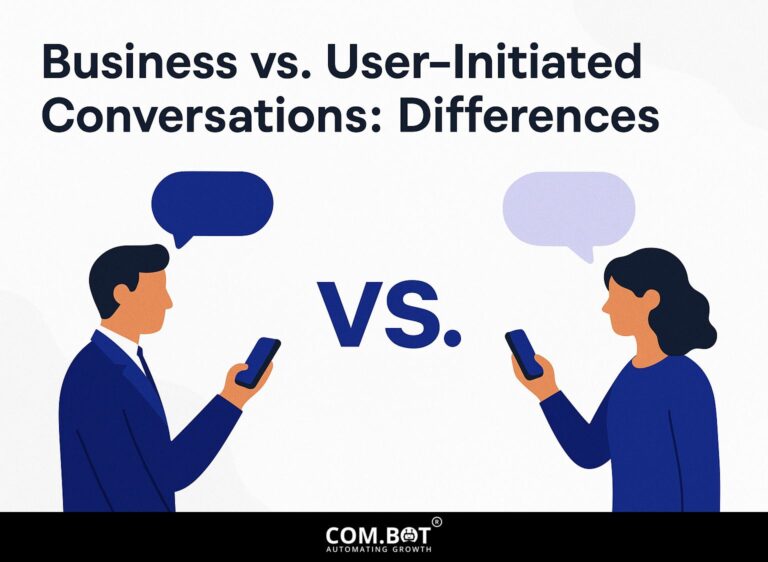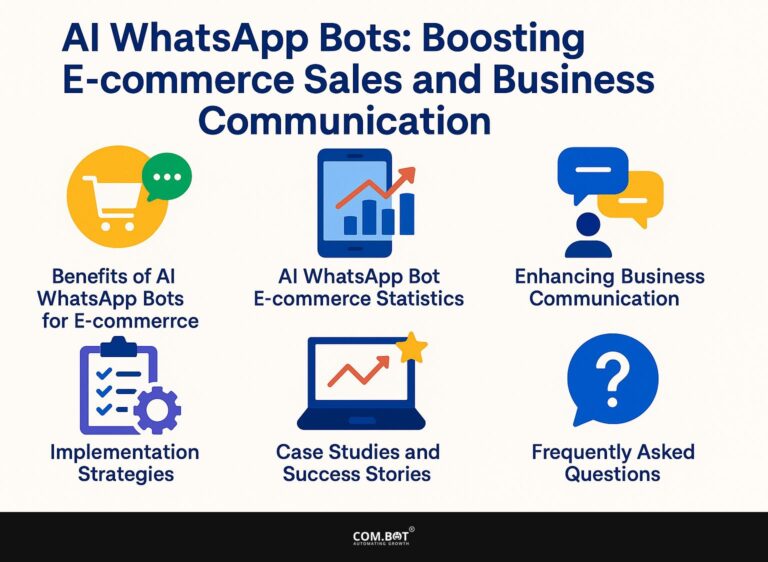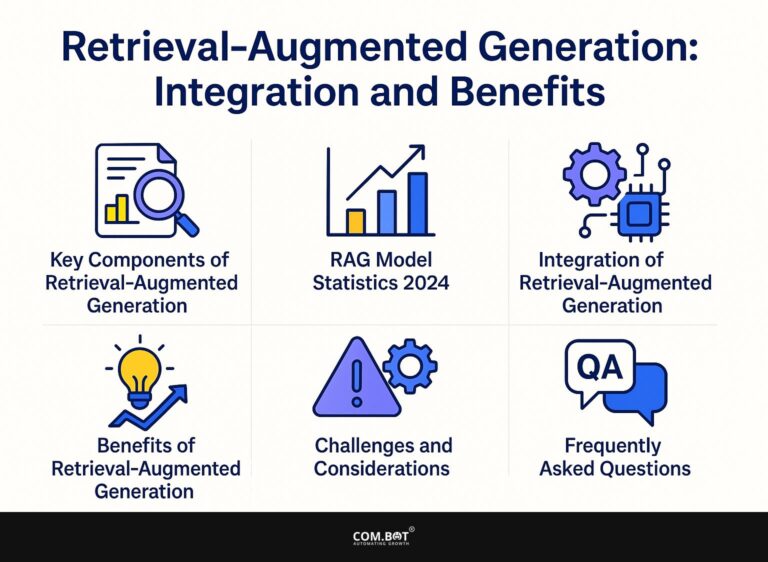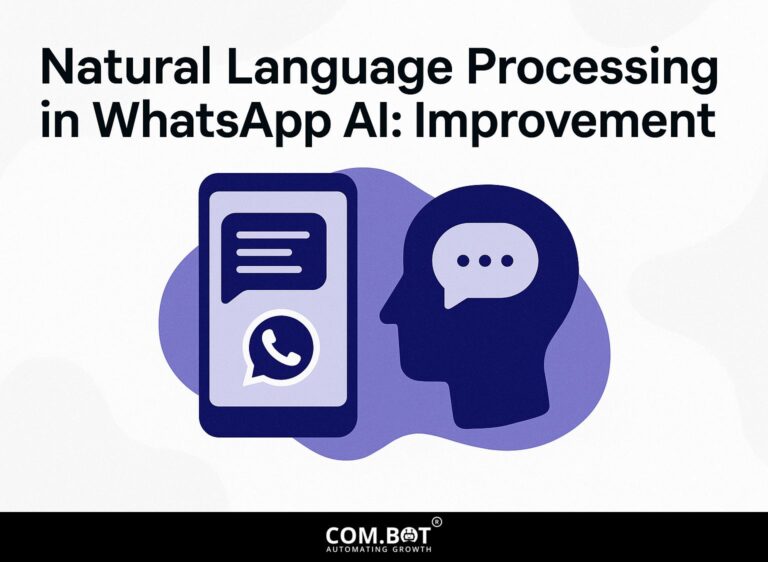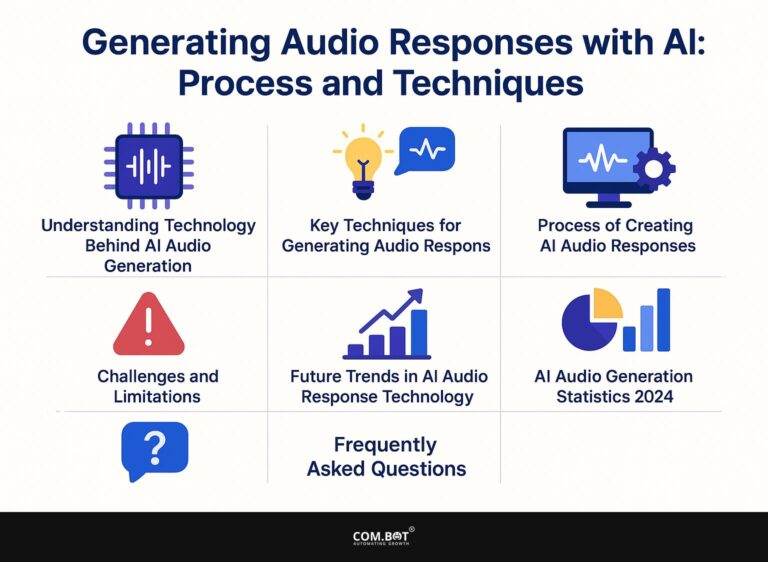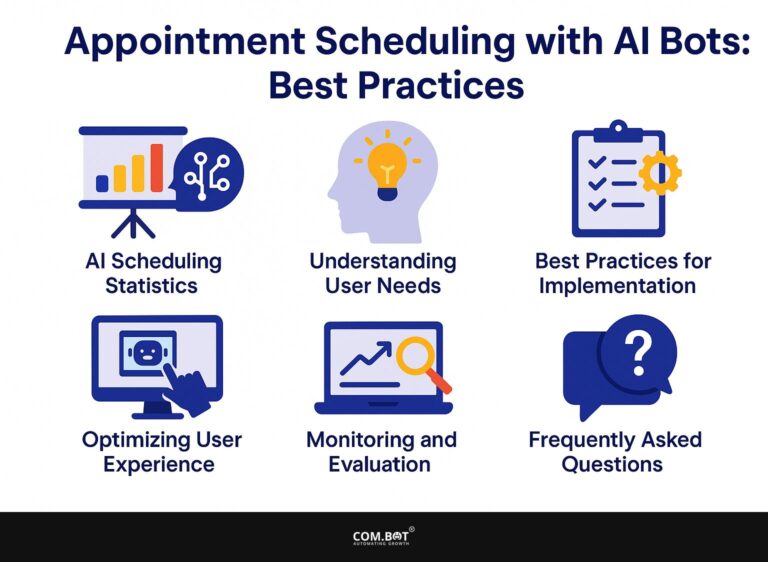Harnessing AI Bots for Business Intelligence
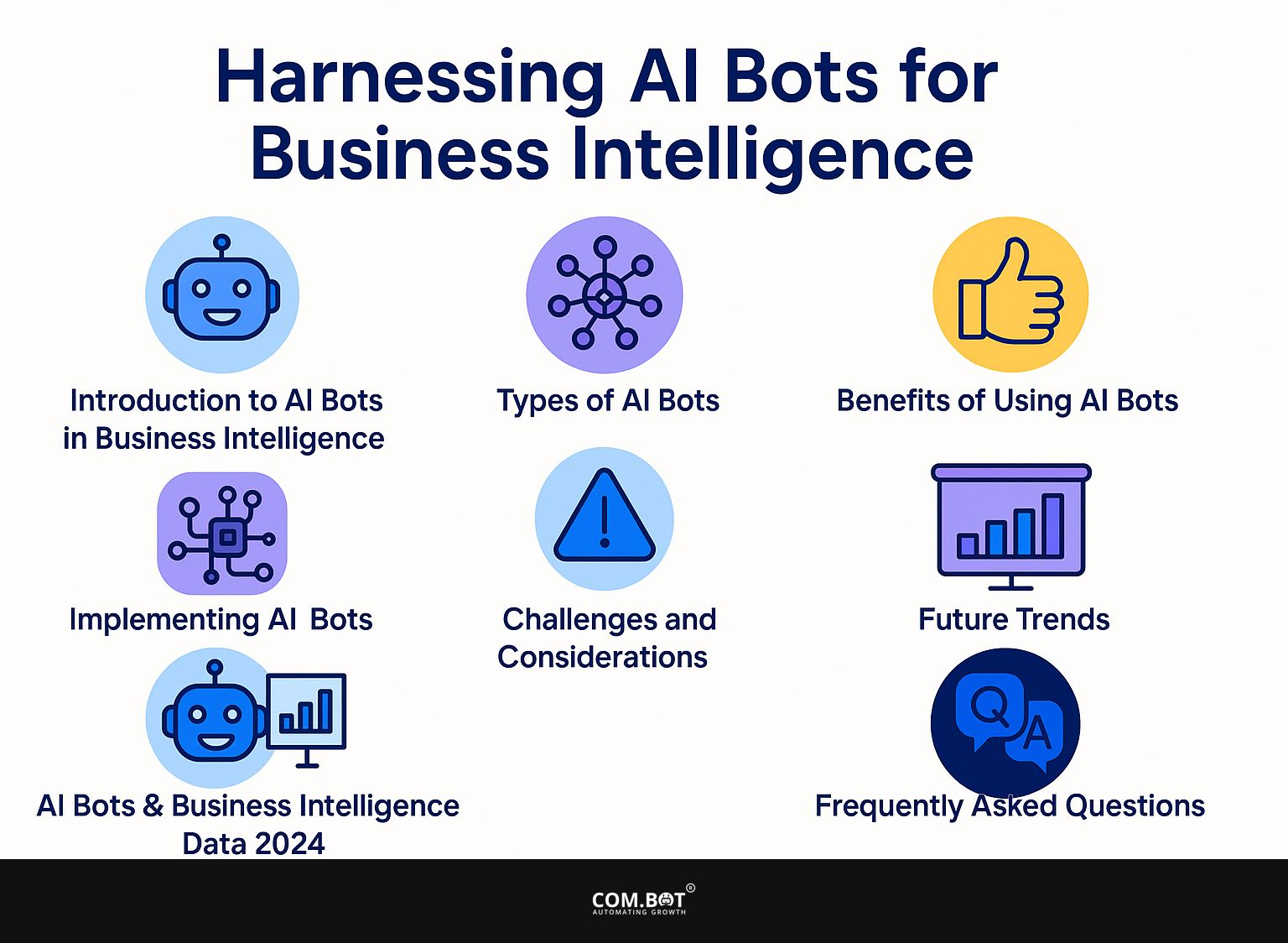
- 1 Introduction to AI Bots in Business Intelligence
- 2 Types of AI Bots
- 3 Benefits of Using AI Bots
- 4 Implementing AI Bots in Business Intelligence
- 5 Challenges and Considerations
- 6 Upcoming Developments in AI Bots for Business Analysis
- 7 AI Bots Business Intelligence Data 2024
- 7.1 Generative AI Chatbot Market Share: Market Share
- 7.2 Generative AI Chatbot Market Share: Quarterly User Growth
- 7.3 Market Trends and Adoption: Business Integration
- 7.4 Market Trends and Adoption: Consumer Interaction and Industry Impact
- 7.5 1. Advancements in Machine Learning
- 7.6 2. Increased Automation
- 8 Frequently Asked Questions
- 8.1 1. What is the role of AI bots in business intelligence?
- 8.2 2. How can AI bots be used for business information?
- 8.3 3. What are the benefits of using AI bots for business information?
- 8.4 4. Are AI bots a replacement for human analysts in business intelligence?
- 8.5 5. How can businesses make sure AI bots are used ethically in business intelligence?
- 8.6 6. Can AI bots be customized for specific business needs?
Introduction to AI Bots in Business Intelligence
In the current market, using artificial intelligence to gain business insights is important. AI bots are changing the way companies handle data analysis and make decisions. With the help of modern AI tools and machine learning, companies can find information more quickly and easily than in the past.
This article will examine how AI bots support better business intelligence, helping you make informed decisions and remain competitive.
Key Takeaways:
- Using AI bots in business intelligence can improve decision-making, lower expenses, and handle real-time data.
- Businesses must carefully consider their needs and choose the right AI tools for successful implementation.
- As technology continues to advance, AI bots will play an even larger role in business intelligence through increased automation and advancements in machine learning.
1. Definition and Overview
AI bots are computer programs made to perform specific tasks, making work in Business Intelligence much easier.
These bots can handle diverse functions, such as customer support and data analysis.
Chatbots such as Zendesk and Intercom provide immediate help to customers by working well with CRM systems, allowing quick answers to questions.
In data analysis, tools like Tableau and Power BI help gather and display data automatically, letting businesses understand information rapidly.
By using these AI tools, companies make their operations more efficient and provide better user experiences, which leads to higher customer satisfaction and loyalty.
2. Importance in Modern Business
In today’s fast-paced business environment, the implementation of AI bots is essential for enhancing operational efficiency and improving customer experience.
AI bots have changed the way businesses work, leading to strong outcomes. For example, companies such as Starbucks started using AI chatbots for customer service, which cut response times by 20% and noticeably improved customer satisfaction ratings. Related insight: AI Bots for Customer Support: Benefits and Satisfaction
A McKinsey report shows that companies using AI tools experienced a 30% increase in how well they operate. To implement AI effectively, businesses can consider using platforms like Drift for customer interactions or Zapier to integrate workflows, both of which facilitate better resource allocation and service delivery.
Types of AI Bots
AI bots come in different types, each performing specific tasks in Business Intelligence, like handling customer communication and processing information. This includes distinguishing between rule-based and AI bots, which have unique differences and use cases. Learn more about how these types vary in their applications.
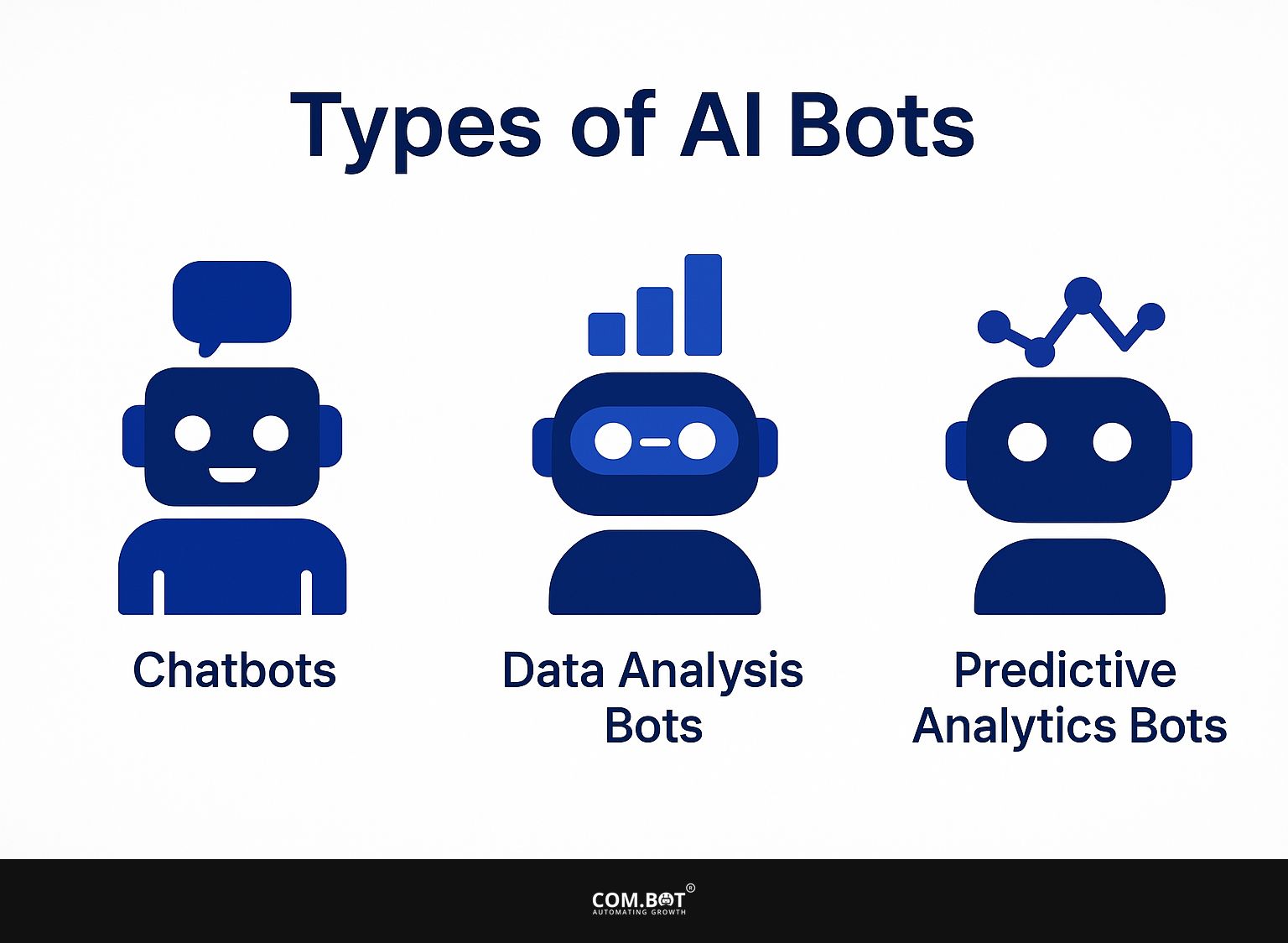
1. Chatbots
Chatbots are AI-driven tools that talk to customers, improving support and service effectiveness. These tools make response times faster-60% of businesses see more interaction-and they work well with CRM platforms like Salesforce and HubSpot.
For example, Drift provides live chat for real-time interaction, while Intercom focuses on customized messaging according to user behavior. By automating responses to FAQs, businesses save time and resources, enabling human agents to tackle complex inquiries.
Using chatbots well can increase customer happiness and make business tasks easier, making them very helpful in today’s online environment.
2. Data Analysis Bots
Data analysis bots use machine learning to look through large amounts of information, providing helpful summaries and charts.
For example, Tableau creates visual representations of complex data automatically, enabling users to build interactive dashboards without needing a lot of programming skills. Google Analytics simplifies tracking website traffic by gathering data from various sources automatically.
A study on a medium-sized retail company found that using Tableau reduced their data reporting time by 40%. This allowed employees to focus more on making important decisions rather than manually entering data. This adjustment improved the speed and accuracy of their sales forecasts.
3. Predictive Analytics Bots
Bots that analyze past data and apply machine learning can forecast upcoming trends to improve decision-making.
For example, a retail chain used PredictHQ to study customer behavior and outside events like holidays and local festivals. By integrating this data into their sales forecasting model, they improved accuracy by 30%.
Using tools like Tableau and PredictHQ improved their reporting abilities, helping them create clearer visual displays of expected sales patterns. This improved decisions on handling inventory, which later increased sales during peak periods. Using similar methods can help businesses improve their sales techniques.
Benefits of Using AI Bots
Using AI bots in business intelligence leads to significant benefits, such as improved decision-making and reduced expenses. To further enhance customer satisfaction, AI bots are increasingly utilized for support services- AI Bots for Customer Support: Benefits and Satisfaction outlines how these tools can streamline processes and improve user experiences.
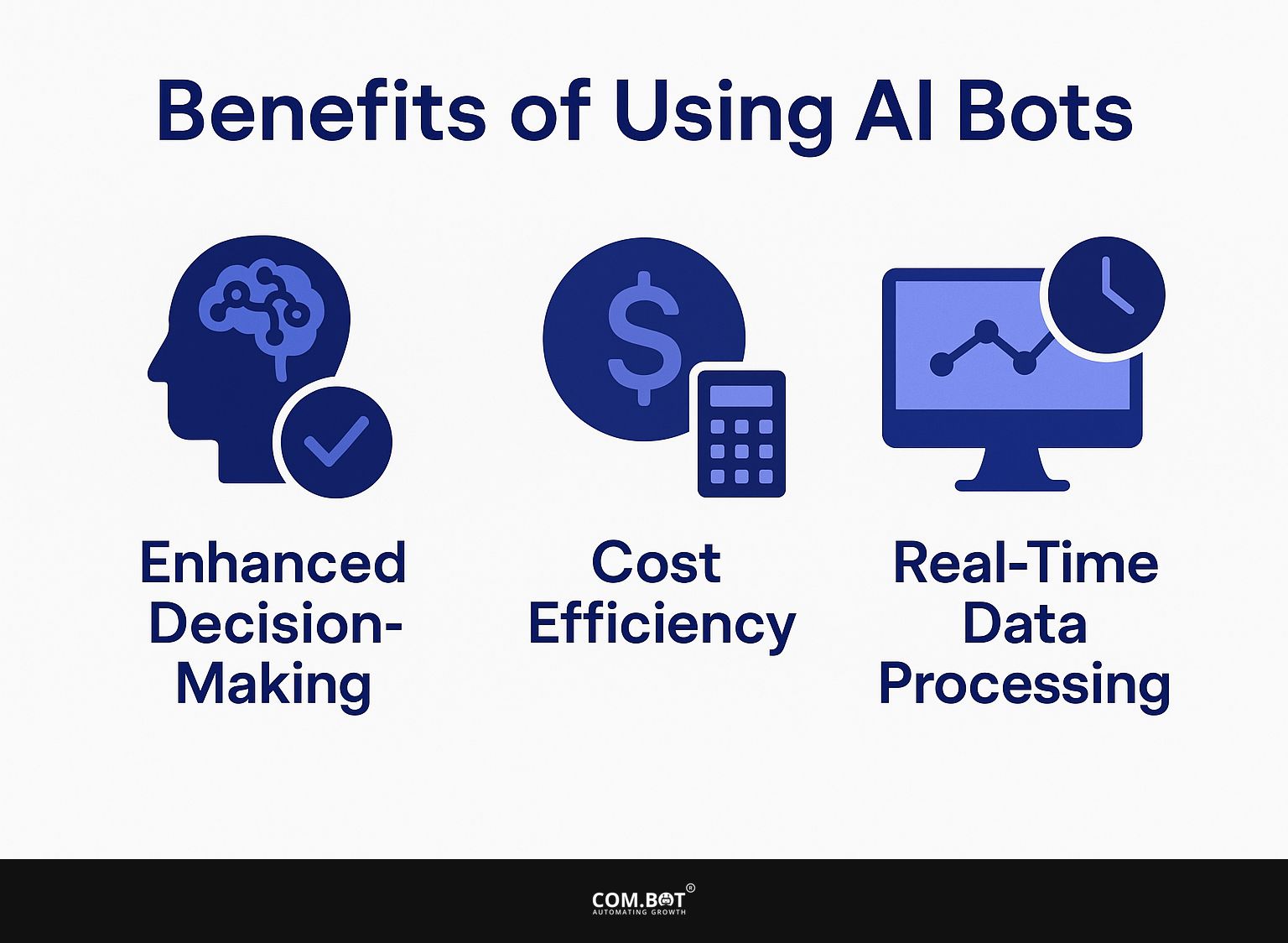
1. Enhanced Decision-Making
AI bots help make decisions based on data by giving immediate information from thorough data examination. Tools like Tableau make this process easier by showing complex data visually, allowing users to quickly notice trends and patterns. Companies using Tableau have improved their decision-making speed by 25%.
Users can make interactive dashboards that highlight important metrics like sales growth, customer satisfaction, and how well operations are running.
Using Tableau along with predictive analytics helps organizations predict upcoming trends, allowing them to make early changes that lead to improved outcomes. Using live data feeds improves response times, ensuring decisions are based on the latest information.
2. Cost Efficiency
Implementing AI bots can lead to dramatic reductions in operational costs, streamlining processes and reducing the need for extensive human resources.
For instance, companies using AI-driven chatbots for customer service reported up to 30% lower staffing costs, as these bots handle basic inquiries effectively.
Tools like Zendesk Chat or Drift facilitate this process, allowing the automation of responses to common questions.
Integrating AI solutions, such as UiPath, for data entry tasks can save up to 20 hours per week in labor, significantly minimizing overhead while maintaining productivity. By using these technologies, businesses can manage resources better and improve service delivery.
3. Real-Time Data Processing
AI bots enable real-time data processing, allowing businesses to make timely decisions based on the latest available information.
One prominent application is in inventory management. For instance, a retail company implemented Google Cloud AI to analyze customer purchasing patterns in real time.
By connecting AI tools to their inventory system, they reduced overstock by 30% and minimized stockouts by 25%. Utilizing predictive analytics, the company could adjust inventory levels based on expected demand fluctuations. This technology helps businesses work faster and better, which makes customers happier and reduces costs.
Implementing AI Bots in Business Intelligence
To successfully use AI bots in Business Intelligence, start by determining the exact needs of your business and choosing the right AI tools. Understanding the scalability and efficiency of these tools is crucial-our insights on Managing High Volume with AI Bots can guide you through optimizing their use.
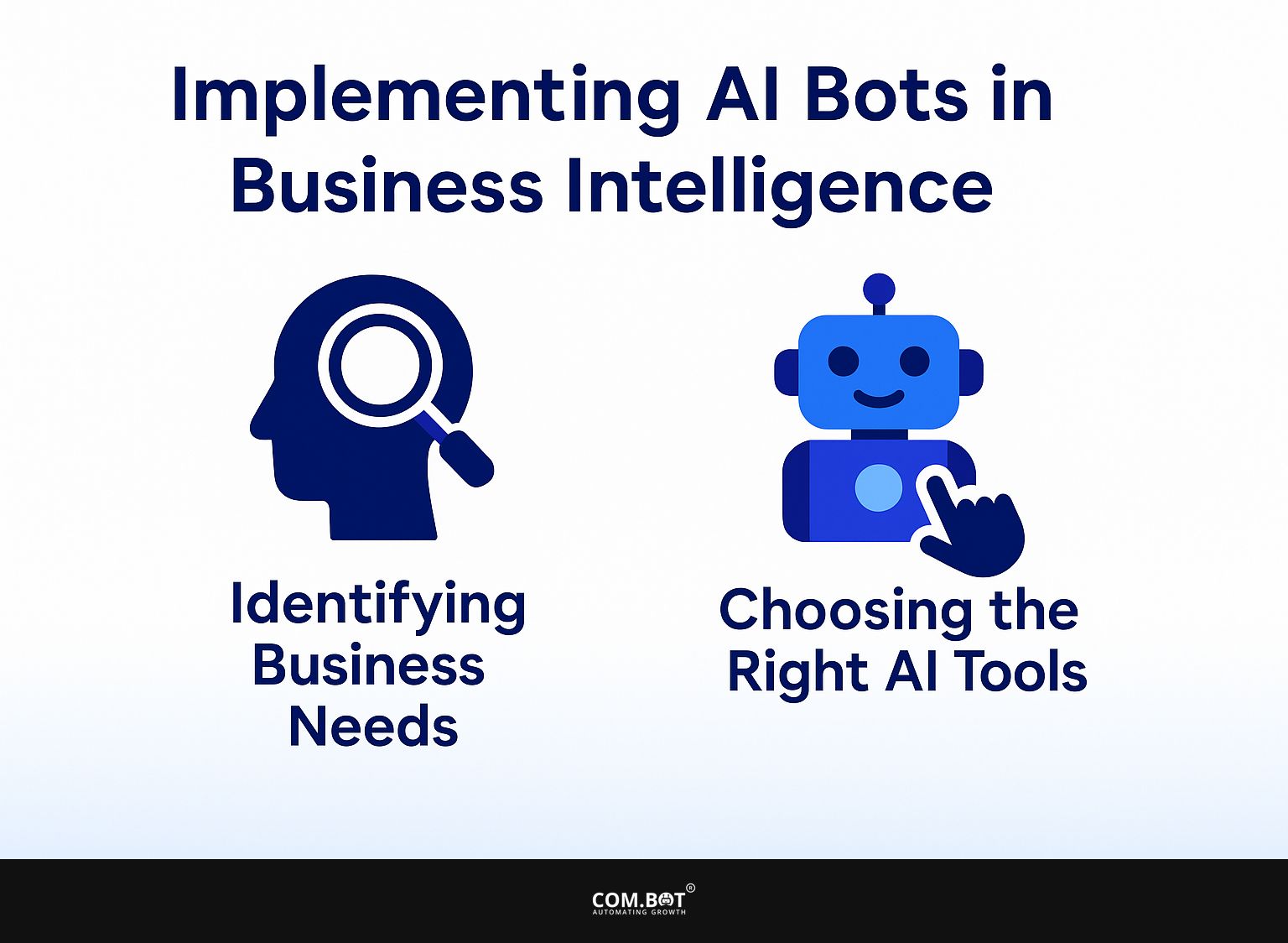
1. Identifying Business Needs
Recognizing core business needs is essential for selecting the most effective AI tools that will drive operational efficiency. Begin with a SWOT analysis to find out your organization’s strengths, weaknesses, opportunities, and threats. This will guide you in prioritizing your needs.
Use SurveyMonkey to gather employee feedback on existing issues, ensuring you address real problems. From there, shortlist AI tools based on these findings.
For instance, if employees struggle with data management, consider solutions like:
- Trello for project tracking
- Zapier for automation
This focused method will make operations more efficient.
2. Choosing the Right AI Tools
Choosing the right AI tools is essential for getting the results you want in Business Intelligence projects. Begin by evaluating the AI tools based on specific criteria. First, check their features-make sure they offer tools for analyzing data, support for machine learning, and easy-to-use interfaces.
Next, look at how well the tools can work together; Emitrr is excellent for connecting customer support smoothly, while BitCot provides customized solutions for your business.
Consider the cost; many tools offer tiered pricing plans, so choose one that fits your budget without sacrificing essential features. This thorough review will greatly improve your ability to make decisions.
Challenges and Considerations
AI bots bring many benefits, but organizations face challenges, especially with data privacy and connecting systems.
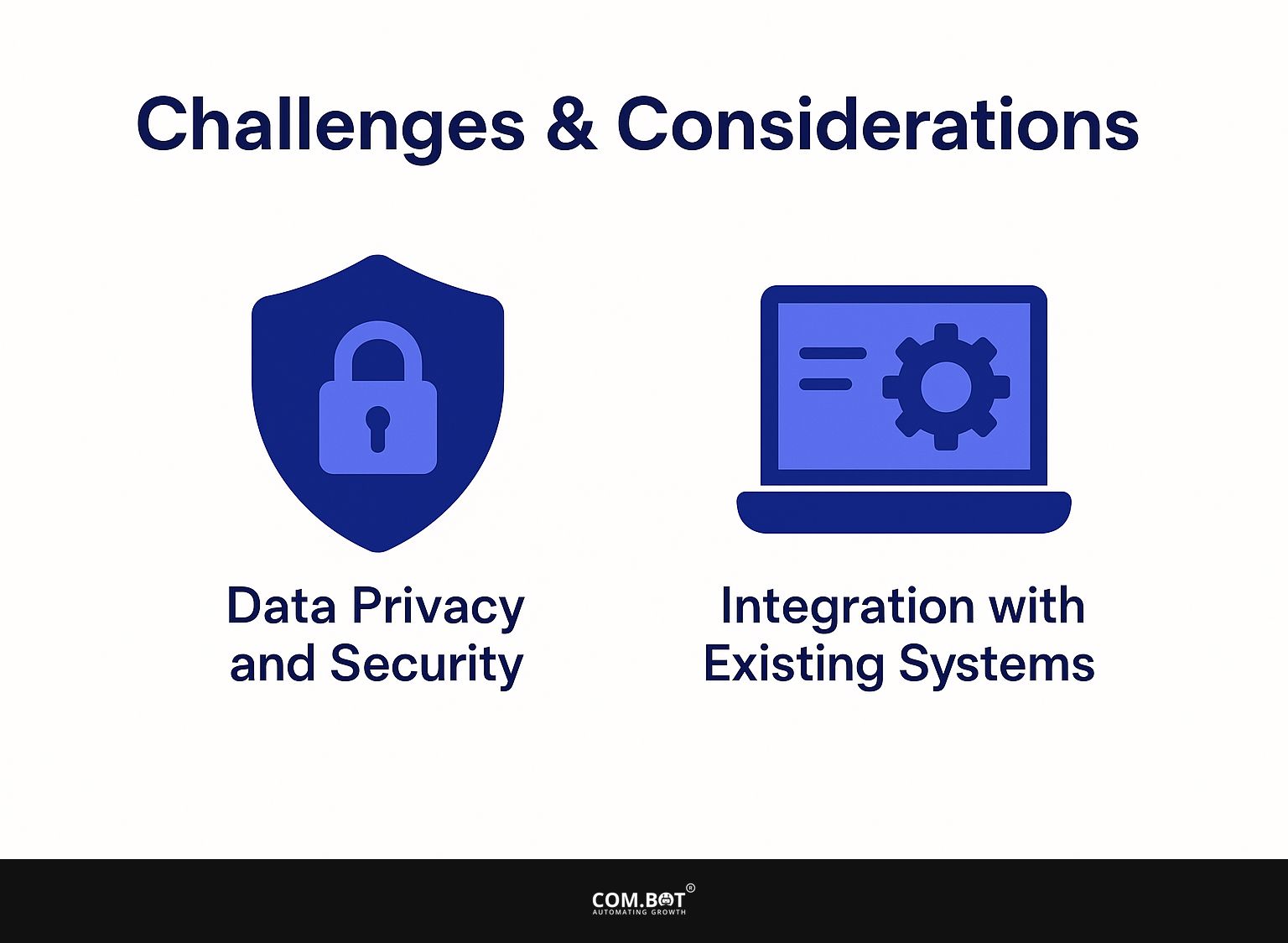
1. Data Privacy and Security
Data privacy concerns are paramount when implementing AI bots, necessitating adherence to regulations like GDPR and CCPA. To comply with regulations and keep user information safe, use encryption software like VeraCrypt for storing data securely.
Data anonymization can be addressed with services like DataMasker, which helps in obfuscating sensitive information. OneTrust can help with compliance management and make your data privacy audits simpler, so you can easily follow changing regulations.
Regularly teach your team about data handling to reduce risks and build an awareness of privacy in your organization.
2. Integration with Existing Systems
Integrating AI bots with existing systems can present technical challenges that require careful planning and execution. To make sure everything functions correctly, begin by thoroughly checking the entire system. Identify all current software and data flows, which helps pinpoint potential compatibility issues.
Next, consider using middleware solutions like Zapier or Integromat to bridge gaps between your AI bot and existing applications. For instance, if you’re integrating a customer service bot, connect it to CRM systems through these tools.
Make a copy of current data before you start; this safeguards against possible problems. Establish monitoring protocols to detect issues early during the implementation phase.
Upcoming Developments in AI Bots for Business Analysis
AI bots are increasingly helpful in Business Intelligence, as advancements in machine learning and automation are transforming the area. For companies handling large datasets, leveraging AI can significantly enhance scalability and efficiency. One of our most insightful case studies demonstrates this principle with real-world results.
AI Bots Business Intelligence Data 2024
AI Bots Business Intelligence Data 2024
Market Trends and Adoption: Business Integration
Market Trends and Adoption: Consumer Interaction and Industry Impact
The AI Bots Business Intelligence Data 2024 gives a complete overview of the current state and developments in the generative AI chatbot market. It provides information on how market share is divided among AI chatbots, their growth over time, and how widely they are used in different business areas.
Generative AI Chatbot Market Share reveals that ChatGPT dominates the market with a commanding 60.5% share. This indicates its widespread acceptance and effectiveness in providing generative AI solutions. Following ChatGPT, Microsoft Copilot holds a 14.3% share, and Google Gemini captures 13.5%, both reflecting significant footholds in the market. Perplexity and Claude AI account for smaller shares at 6.2% and 3.2%, respectively.
In terms of Quarterly User Growth, Claude AI leads with a remarkable 14.0% growth rate, showcasing its potential for rapid adoption despite a smaller market share. Both Perplexity and Deepseek show a substantial growth rate of 10.0%, indicating emerging interest. Google Gemini follows with an 8.0% growth rate, while ChatGPT records a 7.0% growth, highlighting sustained user acquisition.
Market Trends and Adoption data emphasizes the widespread integration of AI chatbots in business operations. Approximately 60.0% of B2B companies and 42.0% of B2C companies are utilizing chatbots, underscoring their role in enhancing customer interaction and operational efficiency.
- Consumer Interaction and Industry Impact: A significant 96.0% of consumers express a preference for chatbots over traditional support teams, pointing to the effectiveness and convenience of AI-driven customer service. Furthermore, the reported 70.0% conversion rates in retail and finance sectors illustrate the impact of chatbots on enhancing sales and customer engagement.
The AI Bots Business Intelligence Data 2024 illustrates the pervasive influence of chatbots across industries, driven by technological advancements and shifting consumer preferences. As businesses continue to integrate AI solutions, these trends signify continued growth and the potential for further innovation in the chatbot domain.
1. Advancements in Machine Learning
Advances in machine learning are creating smarter and more useful AI bots for Business Intelligence. Businesses can use algorithms such as XGBoost and neural networks, along with tools like TensorFlow, to process and analyze large datasets quickly.
For example, XGBoost can improve prediction accuracy, and TensorFlow helps build deep learning models that identify detailed patterns in your data.
To start, you can use TensorFlow with Python to make choices using data. Alternatively, try Microsoft Power BI, which works well with AI methods to show information and patterns clearly.
2. Increased Automation
The shift to using machines and technology is expected to make business tasks easier, letting them be completed faster and with less effort. Companies like Starbucks and Amazon have successfully implemented AI bots for routine tasks, enhancing both productivity and customer satisfaction.
For instance, Starbucks employs AI-powered chatbots to handle customer orders and inquiries, reducing the workload on staff while speeding up service.
In the same way, Amazon uses machines in its warehouse tasks. These robots help with sorting and packaging, which has led to a big increase in how quickly they complete orders. By integrating such technologies, businesses can focus more on strategic initiatives rather than repetitive tasks.
Frequently Asked Questions
1. What is the role of AI bots in business intelligence?
AI bots are important in business intelligence by handling data analysis automatically, giving real-time information, and helping improve decision-making.
2. How can AI bots be used for business information?
Businesses can make AI bots work by linking them to their existing systems and providing them with the suitable data to perform specific tasks.
3. What are the benefits of using AI bots for business information?
Some advantages include quicker data processing, lower expenses, and improved customer experiences through customized information.
4. Are AI bots a replacement for human analysts in business intelligence?
No, AI bots are not meant to replace human analysts, but rather to support and improve their skills. Human analysts can offer thoughtful analysis and background to the information created by AI bots.
5. How can businesses make sure AI bots are used ethically in business intelligence?
Businesses can make sure AI bots are used ethically by creating clear rules and policies for their creation, training, and use. Regular checks and openness in how decisions are made are also important.
6. Can AI bots be customized for specific business needs?
Yes, AI bots can be taught and changed to fit a business’s unique needs and problems, providing customized information and answers.
